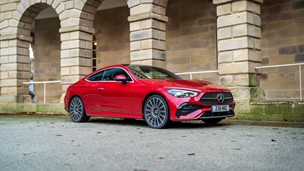We've been here before - at least, CARkeys has published several previous reports on the 307 SW - but this is the first one specifically about a turbo diesel model, the SE five-seater with the 108bhp HDi engine.Although private buyers, in the majority for this kind of car, often prefer petrol engines, a fair number of SW buyers go for the HDi 90 with 88bhp or the HDi 110 as here, the apparent discrepancy in power output figures being due, as usual, to the difference between mainland European and offshore-island horsepower calculations.Going diesel certainly makes sense in a car like this which is designed to, even if it rarely does, carry a full load of seven varyingly sized occupants (small people in the optional third-row seats if fitted, which they weren't this time) or up to five adults and a pile of luggage.There's simply no arguing with the mid-range pull of the HDi 110 engine with its 188lb/ft of torque wafting in from 1750rpm. This model is by far the best hillclimber in the range, it overtakes smartly, and the fuel consumption, especially on a motorway cruise, is commendably low.So are the CO2 emissions. There would be no other way to get a car with this size of engine and this amount of bulk to a figure so far below 150g/km.The heavier diesel engine does bring in more front-end weight, and, since we've already given mixed opinions about how the petrol cars handle and ride, it's as well to point out right away that the HDI models aren't by any means the sporty ones. The reduction of three insurance rating groups, compared with the two-litre petrol car we tested previously, seems to confirm that.Obviously, the installation of the diesel engine makes no difference to the general layout, the accommodation or the visibility. The SW is a car which, if carrying four adults, would be better with the small-size middle rear seat removed and the outer ones slid in, to give more elbow room. And there's no chance, from a conventional driving position, of getting any clue as to the whereabouts of the front bumper.The panoramic glass sunroof with its electrically-operated shutter, extending beyond the back of the mid-row seats, is still a remarkable thing to find in the standard specification and not as an extra-cost option.Like other 307s, the SW scores high marks for neat instrumentation. And I'm amused that this is one of a number of current models whose computer display panel includes both a digital clock and a "virtual" analogue type.SE versions come with a very full range of equipment, from rain sensor wipers, occasionally rather too sensitive "automatic" headlamps, electric fold-in door mirrors, an electrochrome interior mirror and storage trays under both front seats. Options include a £915 black-and-white satellite navigation system with radio/CD and GSM phone.Without repeating too much of what we've said before, it's still the case that, what with one thing and another, these are well-equipped and - from the accommodation point of view - very versatile cars.Second opinion: A very fine engine, no question, and its weight doesn't seem to make much difference to the rather stodgy handling because the petrol ones are like that too. I think the SW shows more promise as a carrier of luggage than of people, since it won't really cope with more than four adults in any degree of comfort, and this might be worth considering for anyone who thinks they are about to buy a true mini-MPV. Good economy, and great noise suppression as elsewhere in the range. The petrol versions are quieter still, of course, but the diesel is the better car. David Finlay. Engine 1997cc, 4 cylinders Power 108bhp Fuel/CO2 52.3mpg / 143g/km Acceleration 0-62mph: 12.7 seconds Top speed 114mph Price £16,700 Details correct at publication date

Our Rating



